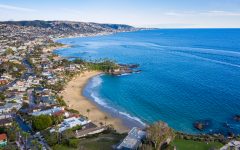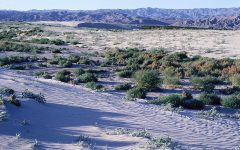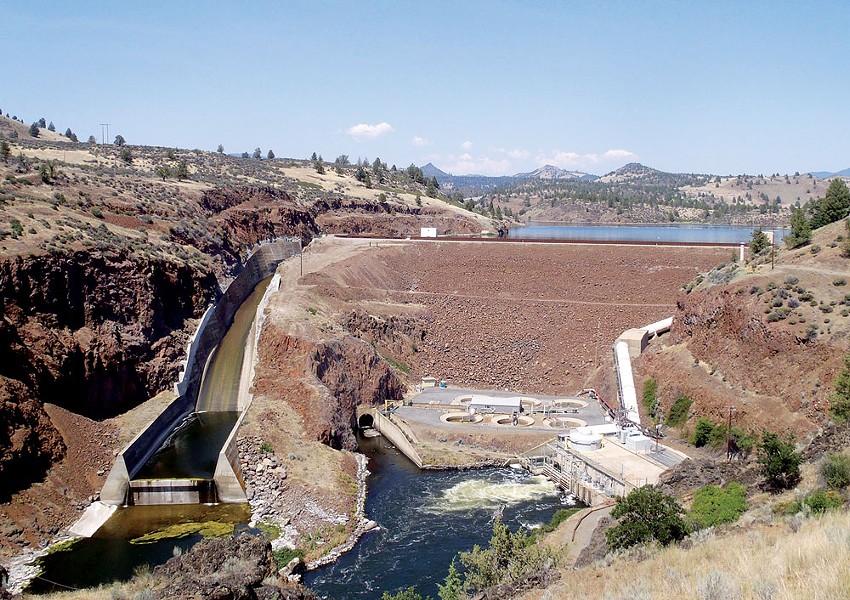
Lower Klamath National Wildlife Refuge. (Photo: Public domain)
Ringside: The Klamath Basin ‘Restoration’ is at What Cost?
All but forgotten, there are the farmers and ranchers who have given their lives to producing food for us to eat
By Edward Ring, January 18, 2024 2:30 am
 If you scan news reports and search results for Klamath Dams removal, the news is universally upbeat. “The river will run free again.” “A step towards justice.” “Largest river restoration project in American history!” But as waters now drain out of the reservoirs behind these half-demolished dams for the last time, unanswered questions persist.
If you scan news reports and search results for Klamath Dams removal, the news is universally upbeat. “The river will run free again.” “A step towards justice.” “Largest river restoration project in American history!” But as waters now drain out of the reservoirs behind these half-demolished dams for the last time, unanswered questions persist.
How this project will impact the region’s agricultural economy, and whether or not it’s even the most environmentally worthwhile use of mitigation funds on the Klamath watershed is not beyond debate. In fact, if you speak with nearly everyone actually living along the middle and upper Klamath, you’ll get informed opinions and testimonials that are completely different from what you’ll find in the downstate press, or from press releases from the many NGOs, agencies, and government contractors partaking of this half-a-billion dollar taxpayer-funded bonanza, or via any mainstream social media or search engines.
It isn’t hard to figure out why opponents of dam removal have been drowned out. The population of Siskiyou County is 44,118. The population of neighboring Modoc County is 8,661. To save their farms and ranches, these people hold bake sales. The special interests chasing that half-billion in mitigation funds (likely just the first tranche) bring with them the combined weight of countless state and federal agencies, powerful environmentalist organizations, and assorted civil engineering and environmental vendors hungry for a huge contract. It’s no contest.
It would take volumes to adequately describe the sequence of events that has led to the removal of dams on the Klamath, or the observations and theories and events leading up to the decision. But voices that contradict the prevailing narrative and policies haven’t been heard. They would include the Siskiyou County Water Users, Klamath Basin Crisis (a Facebook group), and “Shut Down & Fed Up,” representing upriver agricultural communities. From talking with members of these organizations and others, a story emerges of deception, distortion, misrepresentation, harassment, betrayal, and ultimately, abandonment.
Here are questions that have not been answered to the satisfaction of the people most affected by the removal of the dams. It is in everyone’s interests, including the Native Americans who have been told that dam removal will restore salmon populations, to revisit these questions with honest debate between experts holding differing opinions. What if after all this work is done, the salmon still don’t recover? That is a distinct possibility, yet in the following questions there might, just might, lie more restorative alternatives.
1 – Where is evidence that salmon ever swam upstream into the upper Klamath River? Aren’t the canyons where the dams are built crossed by lava flows that prevent salmon from continuing upriver? Won’t the red band trout upriver just eat any introduced salmon, just like the bass do in the Sacramento-San Joaquin rivers?
2 – Is it true that once the dams are gone, it will be found necessary to blast “volitional passages” through natural rock formations that would otherwise prevent salmon from swimming further upstream? How is this consistent with restoring the river to its original natural state?
3 – Since increasing the flow of the lower Klamath to wash away the parasite Ceratomyxa shasta that kills salmon has not helped, why, just once, hasn’t the opposite tactic been tried? Why not reduce summer flows so the parasite, which lives on the banks of the river, will dry out and die?
4 – Isn’t it true that before dams and diversions were altering the natural flow of the Klamath, the flow from the upper Klamath downriver would nearly dry up most summers, with most of whatever summertime flow there was coming from springs and tributaries? Why then is there such an emphasis on summertime flows?
5 – Isn’t it also true that historically, most of the flow from the upper Klamath went into Tule Lake, and water would only flow naturally downstream in high volumes during floods?
6 – Won’t maintaining healthy summertime flows on the lower river artificially be harder if these mid-river dams are removed? Won’t the water released from the bottom of those reservoirs be cooler than water that has to flow all the way across the high desert from the Upper Klamath Lake in Southern Oregon?
7 – When the four mid-river dams are removed, will water in Upper Klamath Lake behind the Link River Dam that normally is allocated to maintain the Tule Lake and irrigate the upriver farms be used instead to be sent downstream? And will that even be helpful (see #4, #5 and #6)?
8 – The sucker fish in the Klamath Lake are also threatened by parasites. Why has policy been to keep more water in Klamath Lake in an attempt to save the sucker fish, when historically the lake has been shallow and would recede in the summer? Don’t the parasites and predators that attack sucker fish spawn in the shallows on the edge of the lake and would die if they dried out?
9 – People owning property along the Klamath and its tributaries used to keep “hatchery boxes” along the banks, where they would keep salmon fry until they were big enough to release. This practice is now prohibited, allegedly to prevent disease. But might not the benefit of reviving private hatchery boxes outweigh the risks?
10 – Why hasn’t more attention been given to the harvesting of salmon by international fishing vessels, along with the rising population of killer whales and seals that eat salmon? Why aren’t there steps taken to remove seals that crowd the estuaries during salmon runs?
11 – Won’t increasing flows down from the volcanic river bed in the upper river result in introducing more phosphate into the water, which will stimulate the growth of algae?
12 – For the amount of money being spent to remove dams that might actually benefit salmon by retaining the capacity to release cold water into the lower Klamath River, why not remediate major tributaries on the river instead? Why not invest in restoring narrow channels in the Salmon River? Didn’t floods in 1964 alter the hydrology of that river, rendering the channel wider and shallower, destroying what had until then been ideal habitat for salmon spawning? Why not fix the Salmon River and other tributaries? It would cost a lot less.
And then there’s the 20 million tons of silt behind these dams, silt that will clog downstream gravel spawning beds for who knows how long.
All but forgotten, there are the farmers and ranchers who have given their lives to producing food for us to eat. Better to import beef from Brazil and barley from Canada. Is that it?
Everything we see and hear about the Klamath River dam removal project is positive. But nobody in any position to slow the momentum of this project wanted to consider the possibility that the Klamath River ecosystem and the species therein could have been restored faster, and for far less money, even while leaving those dams intact.
- Ringside: Reversing California’s Policies of Scarcity - January 8, 2026
- Ringside: What is the Future of California’s Republican Party? - December 31, 2025
- Ringside: CA GOP Just Blew $46 Million for Nothing – Here’s How They Can Avoid Repeating That Mistake in 2026 - December 24, 2025





I am glad there is one person in the wilderness of graft who speaks common sense to the deaf in power.
I think to remain true to their mission they should bring the Tahoe basin back to where it was before the “pale face”. Take out the dam. Erase the man made structures and rename it Bambi Land. Let’s go back to the good old days when only explorers knew Lake Tahoe was. We are done with progress.
We would all be better off splitting the state and bulldozing the Capitol – home of the “Nuts, fruits, and flakes”.!
Yes, Chuckiechan, and how about San Franciscans restore underwater Hetch Hetchy, twin of Yosemite, from where S.F.ers get their potable water? That’s an old one though, and it’s just not going to happen, is it. Kinda fun to tweak and poke the hypocrites about it occasionally, though.
SUCH good points, as usual, in Edward Ring’s piece. These eternal wreckers of everything that’s not broken don’t care, of course, but it’s good to be reminded of just how stupid and damaging this nonsensical but hyped-up Klamath Dam removal and blot and blight (“restoration” my eye!) is. And maybe one day all of this sensible policy now on the record will actually be used by hoped-for sensible people.
Klamath basin is a desert. Probably not wise to ranch/ farm in a desert. Us locals were here first, so dibs on the water and fish. Klamath basin should thank Berkshire Hathaway for footing the water restitution to Tribe’s invoice.
The Klamath Basin has nutrient-rich soil and since 1905 the Klamath project “A” canal has delivered irrigation water to about 240,000 acres of alfalfa, grass seed, potatoes and other crops. Warren Buffet is a corrupt deep state globalist and his Berkshire Hathaway Energy company is being used to bankrupt the famers by removing the dams and the water it provides for them to grow crops. Opportunities are limited in the Klamath Basin and ending farming there makes it even more limited. Nick C must like eating bugs and obeying his globalist masters while owning nothing?
Obviously Nick C isn’t from around here. If this place was a desert then where do the fish and water come from??? What about the fish and crawdads now left to die where Topsy reservoir once was. Now only a creek. We’ve all been scammed. And never had a chance.
All the farmers and ranchers there would have had to move decades ago if it wasn’t for government welfare
“bankrupt the famers by removing the dams and the water it provides for them to grow crops.”
Great example of how well prepared this side is for the argument. Completely unaware of the fact that the dams we’re talking about here have never provided a single drop of irrigation water to anybody, ever. Just more wild nonsense. Well done, TJ.
Klamath basin is a desert. Probably not wise to ranch/ farm in a desert. Us locals were here first, so dibs on the water and fish. Klamath basin should thank Berkshire Hathaway for footing the water restitution to Tribe’s invoice.
Does anyone realize once the dams are gone so are our big trout.there will be no food for them to eat.so they will go else we’re to find food.So our fishing will be over with.And another thing.the salmon never came up as far as klamathriver.or up here to the link river they have never come up this far.
So true! Our politicians seem to work for special interests!
Mr. Ring pointed out that the farmers and ranchers who have given their lives to producing food for us have all but been forgotten in the removal of the dams on the Klamath River. Maybe that’s the main goal of Klaus Schwab and the evil World Economic Forum globalist cabal who are meeting now Davos scheming to insure that much of the world’s population have only bugs to eat and own nothing?
Davos has declared that farmers are on par with war criminals for the crime of producing food.
This is the mindset of the deconstructionists and depopulationists behind this project.
Yes this is all part of an international global conspiracy.
Who’s going to bring up the real cause? When are we going after the Reptilians? Or wait, the baby eating Democrats too?
There is zero rational content in these comments.
Scott sounds triggered and seems to know all about posting comments with zero rational content? Maybe Scott needs another COVID vaccine booster that his satanic baby eating reptilian Democrat masters decreed need to be taken?
There are a lot of questions here, some that will need time to resolve. I’ve read environmental reports that natural summertime flows will be lower than under dam release schedules, but the temperatures will likely be similar since the reservoirs are very shallow and warm. The algae form in these lakes because the water isn’t moving so water quality should be improved once the dams are removed. The reservoirs were only for hydroelectric operations not irrigation, water supplies for farmers are drawn from above the four dams. I think it does a disservice to hardworking farmers to assume that they don’t care about ecosystem health and river restoration, I’ve read that many support dam removal and salmon recovery because they will have less restrictions under the endangered species act.
Klamath basin is a desert. So let’s plant and ranch. Sorry dust bowlers, we were here first….dibs. Pay tribes restitution for your water
No, the Klamath Basin has nutrient-rich soil that has grown a variety of crops with adequate irrigation for over a hundred years. Who is “we” that Nick C is referring to? Maybe tribal people need to quit being dependent slaves on government run reservations?
you realize farmers and ranchers are completely dependent on government welfare right? They call it a subside but is the exact same thing. Free money the government gives you.
Klamath basin is a desert. Probably not wise to ranch/ farm in a desert. Us locals were here first, so dibs on the water and fish. Klamath basin should thank Berkshire Hathaway for footing the water restitution to Tribe’s invoice.
Klamath basin is a desert. Probably not wise to ranch/ farm in a desert. Us locals were here first, so dibs on the water and fish. Klamath basin should thank Berkshire Hathaway for footing the water restitution to Tribe’s invoice.
The murder and genocide of at least one thousand Red nation natives and theft of tribal lands by farmers and ranchers led to the creation of Linkville and the eventual creation of multiple sawmills all running twenty-four hours a day to process timber stolen from Reservation land and never paid for . The results of the further theft of Reservation lands to become cow manure phosphate generation facilities by draining freshwater above ground aquifers still poisons the Klamath Lake beyond usable water every year with health warnings posted everywhere , and still the march to create another dustbowl for rent investment and profit continues , even though the water is unsafe for use and the five rivers and creeks that feed into the upper and lower Klamath Lakes , no longer flow to refresh anything and die further for agribusiness every day .
Once the sawmills, agribusinesses, and other businesses that support the Klamath Falls area are shut down, there will be hardly anyone left who could afford to throw their money away at the Kla-Mo-Ya Casino?
This is a lie that you are either unaware of our repeating willfully. The runoff from the farms has less phosphate in it than the naturally occurring runoff. The entire upper Klamath traverses lava flows rich in phosphate. The upper river was never nutrient free, which is another reason removing these dams and sending more water downriver (which also never happened historically) will not help fish.
What about the thousands upon thousands of migratory birds in their north and south migrations. Tule and L. Klamath marshes are critical to the health and, in the northward migration, preparing birds for reproducing successfully.
Hunters, for years, helped the economies of the towns of Merrill, OR and Tule Lake, CA. Now there is no consideration for the many species of birds nor the positive impacts of hunters on these economies. Historically, prior to the railroad being put in (it acted as a dam to prevent the Klamath River from overflowing in the spring) the Lower Klamath marsh covered many thousands of acres. Birds utilized it extensively.
Many losses of wildlife habitat are occurring with the actions of this “fish project”.
Paranoid re “globalist” cabals much? Wait…I hear the faint chant of QAnon…ugh…welcome to the new world order controlled by extremist conspiracy theorists.
Johnny D probably still wears at least two masks at all times while rarely leaving his safe place and he no doubt has taken all vaccines and booster shots that his Democrat and globalist masters have decreed that must be taken?
Nick C
You speak of only your tribe, what about the modocs invoice? The dust storms you see rise off lower Klamath lake and tule lake are the spirit’s of captain jack and his people. The Warm spring and Klamath locals helped white man hunt down and kill and remove the modocs. Just like they are helping white men kill and remove the white farmers now. The one thing we can learn from history is that we learned nothing from history.
Wow. A great thread of comments. But in the end, how old are y’all? If you’re in your 50’s, 60’s then who cares? Twenty years from now you might be dead. Life is short people. If you have children and grandchildren, enjoy. The human species is nothing but a grain of sand in the lifetime of this planet. Y’all are lucky to be alive. Take a deep breath and enjoy each and every day.
Engineering overtaken by Social Engineering is typically not what it appears to be at first blush.
Wonderful article we need more people with common scents.
I think Ranchers and Farmers have been stagnated in old ways. There are better more sustainable farming techniques readily available where the same amount of crop can be produced on a third of the resources like land water and most importantly time spent working on the project. Ranchers to have not advanced themselves with time there are many tools they could be using drones, electronic trackers and health monitors as well as better more sustainable grazing practices. They are foolish to think it would work the same and stay the same forever. The strongest ability of us as a species is to adapt. We adapted our techniques and ways to have the system we have had and found it to be damaging so now we must do better adapt and overcome come back stronger. Instead of pointing out problems be an innovator and help find solutions for the very problems you for see
I certainly agree that these will be hard times for he many of rural people that based our economies on the unsustainable use of the West, while urban and suburbanites drive the mass consumption of resources and the world into a dead end. But I am happy that there is a serious attempt to restore the Klamath Basin back to some of its remarkable natural productivity.
You lost me when you suggested that the red band trout would prevent salmon returns. I used to catch those colorful little trout as a kid, and there are rarely if ever enough locally to substantially impact a salmon redd — there are usually just a few per pool.
Farming and ranching in these areas has been unviable financially for decades. farming only survives in the US because of government welfare. The world has changed since a lot over the past hundred years and we should stop giving government welfare to help farmers and ranchers who live on land that is not naturally farmland or ranch Land. it is not a viable way of life without government welfare. I wonder how many billions of dollars we waste to maintain dams and other infrastructure in areas where populations of humans really shouldn’t live
This article is hilarious. It gets everything wrong from the very start, claiming a marsh photo with Thielsen in the background is the lower refuge. The author is clearly and grossly misinformed about many basic facts on the subject. One can systematically go through the numbered questions and shoot them down individually but I think #1 stands as a great representative of the complete and total naivety displayed by the author. To be so uneducated about the historic range of salmon and trout suggests a total lack of research or an extreme bias, maybe both. Chances are good you’ve already seen the historic photo of salmon fishermen on Link River and passed it off with some silly excuse, like it was staged or mislabeled. That’s the real problem here- your agenda. The actual facts of the matter seem to have zero bearing on your radical opinions and you deny them when there’s a contradiction. You, sir, are an embarrassment to logic and rational thought.